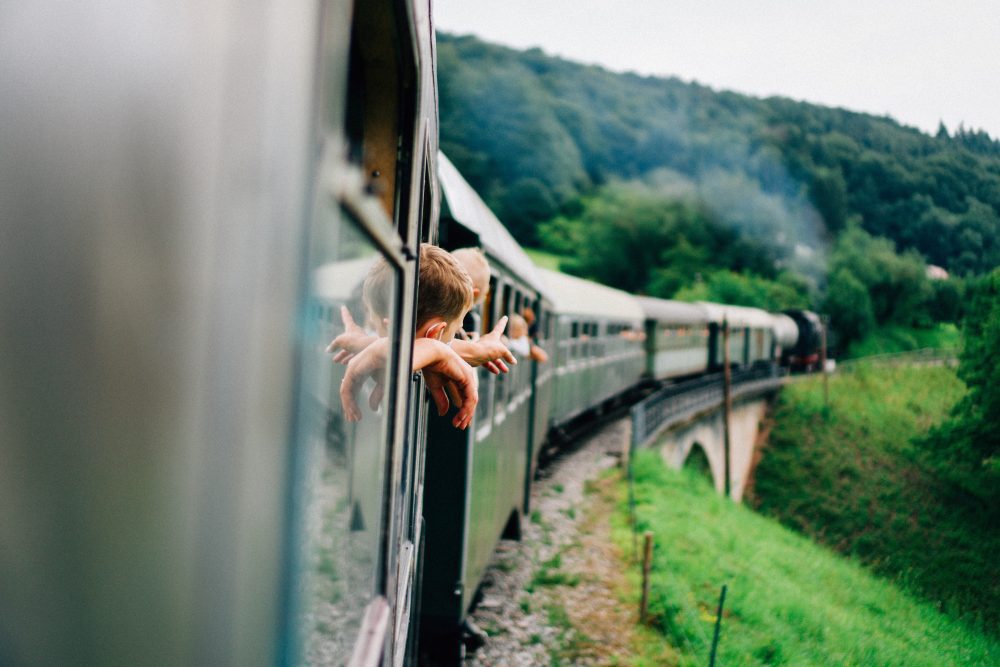All aboard! Germany’s efficient and extensive railway system offers a wonderful way to explore the country’s rich history, culture, and stunning scenery. With its sleek trains whisking travelers from city to city in style, riding the rails is both practical and enjoyable. In this blog post, we’ll take you on a journey from Berlin to Munich – two of Germany’s most vibrant cities – via train. Along the way, we’ll also share tips for making the most of your train travel experience in Germany. So sit back, relax and enjoy the ride as we discover what makes traveling by rail so special in Deutschland!
The History of Germany’s Railways
The history of Germany’s railways dates back to the early 19th century when steam locomotives first started operating in the country. The first railway line between Nuremberg and Fürth was opened in 1835, paving the way for a revolution in transportation that would transform Germany’s landscape.
By the late 1800s, Germany had one of the most extensive rail networks in Europe, connecting major cities and towns across the country with swift and efficient transport. Under Nazi rule during World War II, however, much of this infrastructure was destroyed or damaged beyond repair.
After the war ended, reconstruction efforts focused on rebuilding railways as part of a broader effort to revitalize German industry. Today, Deutsche Bahn – Germany’s national railway company – operates over 33 thousand kilometers (20 thousand miles) of track serving passengers and freight alike.
Germany is also home to some iconic train models like ICE (InterCity Express), which is known for its sleek design and high-speed capabilities. With such an impressive legacy behind it, it’s no wonder that traveling by train continues to be a popular mode of transportation in modern-day Germany.
Berlin to Munich by Rail
Berlin and Munich are two of Germany’s most vibrant cities, and what better way to explore them than by rail? The train journey between these two iconic destinations is not only convenient but also incredibly scenic.
The train ride from Berlin to Munich takes around four hours, passing through the picturesque countryside of Bavaria. As you travel further south, you’ll notice the landscapes changing from flat to hilly, with quaint villages dotted throughout.
One highlight of this journey is arriving in Munich’s central station – Hauptbahnhof. This monumental railway station is a hub for both national and international trains, featuring an impressive glass roof that lets natural light flood into the interior.
Another interesting aspect of traveling by rail between Berlin and Munich is experiencing Germany’s famous high-speed ICE trains. These sleek machines can reach speeds up to 300 km/h (186 mph), making your journey quick and efficient while providing stunning views along the way.
Traveling by rail from Berlin to Munich offers an unforgettable experience that combines convenience with breathtaking scenery.
Stopping Along the Way: A Guide to Train Travel in Germany
Train travel in Germany is not just about getting from point A to point B. It’s all about the journey and the many stops along the way that make exploring this country by rail such an unforgettable experience.
Germany has a well-established railway network that connects its major cities, but it’s the smaller towns and villages that are often overlooked. However, these hidden gems offer plenty of history, culture, and natural beauty waiting to be discovered.
One example is Nuremberg – a charming medieval city known for its impressive castle, Gothic churches, and famous Christmas market. Visitors can also explore historical sites like the Nazi Party Rally Grounds or take a stroll through one of its many picturesque parks.
Another must-visit destination is Heidelberg – situated on the banks of River Neckar with beautiful views of its hilltop castle. This romantic city boasts cobbled streets lined with half-timbered houses and lively student pubs where you can enjoy local beer and cuisine.
If you’re looking for something more scenic, hop off at Lake Constance (Bodensee) – Europe’s third-largest freshwater lake located at the borders of Switzerland, Austria and Germany. Take a dip on its crystal-clear waters or simply relax amidst stunning mountain views.
No matter where your train journey takes you in Germany there will always be something new to discover whether it’s cultural landmarks or natural wonders which makes stopping along our route an essential part every traveller should embrace!
The Best Time to Visit Germany by Train
The best time to visit Germany by train depends on your interests and priorities. If you’re looking for warmer temperatures, then the summer months from June to August are ideal. However, this is also peak tourist season, so expect larger crowds and higher prices.
If you prefer cooler weather and don’t mind bundling up, then consider visiting during the fall or winter months. Not only will you experience fewer tourists and lower prices, but you’ll also have the opportunity to witness Germany’s famous Christmas markets.
Another factor to consider when planning your trip is seasonal events. For example, if you’re a fan of beer gardens and Oktoberfest celebrations, then plan your visit in September or October.
No matter what time of year you choose to visit Germany by train, be sure to check the schedules ahead of time as some trains may run less frequently during certain seasons or holidays. Also keep in mind that weekends tend to be busier than weekdays for train travel.
The best time to visit Germany by train is whenever it works for your schedule and preferences. With efficient rail systems connecting major cities throughout the country, exploring Germany’s history and culture has never been easier!
How to Get the Most Out of Your Train Journey in Germany
When traveling by train in Germany, there are a few tips to keep in mind that will help you get the most out of your journey. Make sure to book your tickets early to secure the best deals and avoid last-minute stress. Additionally, consider investing in a rail pass if you plan on doing a lot of travel within Germany or throughout Europe.
Another way to enhance your experience is by choosing the right type of train for you – whether it be a high-speed intercity train or a slower regional one with more scenic routes. And don’t forget to take advantage of any amenities offered onboard such as Wi-Fi or dining options.
Immerse yourself in German culture during stops along the way by trying local cuisine or visiting historical landmarks. With these tips and an open mind, exploring Germany’s history and culture by rail can truly be an unforgettable experience.








